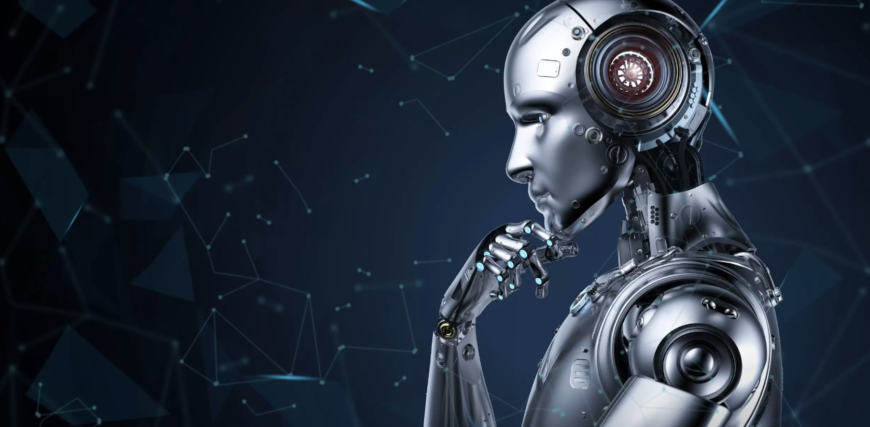Who Pays the Price of AI Technology?
Artificial intelligence (AI) is a multibillion enterprise with so many new sectors coming online in various industries, businesses and even in people’s homes – not to mention in the palm of their hands with their smart phones. From robotic chefs and smart homes to facial recognition technology and digital voice assistants – seemingly no stone … Continued


Artificial intelligence (AI) is a multibillion enterprise with so many new sectors coming online in various industries, businesses and even in people’s homes – not to mention in the palm of their hands with their smart phones.
From robotic chefs and smart homes to facial recognition technology and digital voice assistants – seemingly no stone has been left unturned with AI bringing innovative ideas to drastically bring companies to the forefront of technology 2.0.
The ABCs of AI
At what cost, though? While the AI industry is expected to grow (by the billions) in the coming years, will many jobs be lost in the process and who loses first? Also, what gains will be felt?
Waymark CEO Alex Persky-Stern told the Michigan Chronicle that his company, like many others, is on the cusp of a “new wave” of creative production.
“Generative AI is going to dramatically lower barriers to entry in media and creative fields; this would democratize creativity in a way we’ve never seen before,” Persky-Stern said.
Harvard Business Review reports that Generative AI can produce text and images, like blog posts, program code, poetry, artwork and more.
“In the modern creative world, we’ve been moving in this direction for a while. I like to think about the preceding trend as the shift from ‘Adobe’ era to the ‘Canva’ era,” he said.
In the “Adobe” era, powerful tools with steep price tags and steeper learning curves dominated.
“You needed a lot of time and money to invest in training or outsourcing,” Persky-Stern said. Without them, you were locked out of any serious production. Then, products like Canva came into play a few years ago. These lighter weight, more approachable tools offered the capabilities that the vast majority needed. And they were a lot cheaper and easier to learn.”
The size of the worldwide artificial intelligence industry, estimated at USD 93.5 billion in 2021, is expected to rise at a compound annual growth rate of 38.1% from 2022 to 2030, according to a market analysis report, Artificial Intelligence Market Size, Share & Trends Analysis Report By Solution, By Technology. The adoption of cutting-edge technology is being fueled by ongoing research and innovation carried out under the direction of the tech giants in sectors including manufacturing, healthcare, retail, and finance.
Persky-Stern said that presently, AI is ushering into a third stage.
“In this one, humans come up with the ideas and the vision, and the production is done for us,” he said, adding that businesses remain in the lead. “You still need to have the idea – but you’ll be able to do a lot more without all the technical training and money. It’s hard to know exactly what that will look like — the beauty of creative tools is how creative people can be with them! — but it’s going to be a major shift for the industry.”
Why the AI Shift?
The COVID pandemic has had a profound effect on society and industries. As numerous tech juggernauts and start-ups try to avoid, mitigate, and (still) contain the virus, the pandemic has presented an opportunity for AI-enabled computer systems to combat the outbreak.
The COVID outbreak is already stimulating the market growth of next-generation tech domains, including artificial intelligence, owing to the work-from-home policies that forced technological creativity due to this pandemic working constraints, according to the report. For instance, in April 2020, Google LLC launched an AI-enabled chatbot called Rapid Response Virtual Agent for call centers.

Kwabena “Q” Johnson, CEO of Plug-Zen, a Detroit start-up electric vehicle manufacturer, told the Michigan Chronicle that he uses AI technology for content creation for the work he does.
“It helps out a lot with the company,” he said, adding that his company is developing an NFT campaign as well, which they will be launching pretty soon among other new ventures, which are fueled by AI. “Some of the graphic content that we are using are being developed by AI. We are spit balling and putting our thoughts on paper and having AI come up with different models for us. That is working really well.”
Bitcoins, cryptocurrencies, and non-fungible tokens, commonly referred to as NFTs, are expanding digital assets used for electronic financial transactions that are changing the game for those hoping to make significant gains both online and offline.
Many Black Americans and other people of color are participating in the new gold rush, which is turning into a virtual boom.
Discrimination by Another Name
While there are many benefits to AI, there are big drawbacks, too.
The non-profit organization American Civil Liberties Union (ACLU) notes that from housing discrimination (including AI-based tenant selection and mortgage qualifications) to hiring and financial lending discrimination – AI is not all that it is cracked up to be.
“For example, AI systems used to evaluate potential tenants rely on court records and other datasets that have their own built-in biases that reflect systemic racism, sexism, and ableism, and are notoriously full of errors,” ACLU noted. “People are regularly denied housing, despite their ability to pay rent, because tenant screening algorithms deem them ineligible or unworthy.”
ACLU and other entities called on The Biden administration to take “concrete steps” to bring civil rights and equity to the forefront of its AI and technology policies, and to actively work to address the systemic harms of these technologies.
Last fall, the White House Office of Science and Technology Policy responded with a release of its “Blueprint for an Artificial Intelligence Bill of Rights” guidance document.
In order to safeguard the civil rights of the American public from AI bias and other potential harms, the document consists of a set of principles and practices. It is intended to help guide the design, use, and deployment of artificial intelligence systems and technology across public and private sectors, from housing and employment to health care and others.
The Blueprint for an Artificial Intelligence Bill of Rights addresses all automated systems and AI-driven technology that may have an influence on Americans’ civil freedoms, equality of opportunity, or access to essential resources or services. AI algorithms, for instance, are currently used to decide who gets hired, who qualifies for student loans or mortgages, and to forecast how patients will be treated. This application of AI frequently worsens already-existing imbalances and creates access barriers for already marginalized populations. The goal of the Blueprint for an Artificial Intelligence Bill of Rights is to outline the fundamental safeguards we have against these negative effects.
ReNika Moore, director of the American Civil Liberties Union’s Racial Justice Program, said in a statement online that while the country’s Constitution’s Bill of Rights protects people’s most basic civil rights and liberties from the government, in the 21st century, there need to be more.
“We need a ‘bill of rights’ to protect us against the use of faulty and discriminatory artificial intelligence that infringes upon our core rights and freedoms. We commend the Biden administration on this step toward ensuring that AI systems don’t erode our rights,” she said. “Unchecked, artificial intelligence exacerbates existing disparities and creates new roadblocks for already-marginalized groups, including communities of color and people with disabilities. When AI is developed or used in ways that don’t adequately take into account existing inequities or is used to make decisions for which it is inappropriate, we see real-life harms such as biased, harmful predictions leading to the wrongful arrest of Black people, jobs unfairly denied to women, and disparate targeting of children of color for removal from their families. The Blueprint for an AI Bill of Rights is an important step in addressing the harms of AI.”







